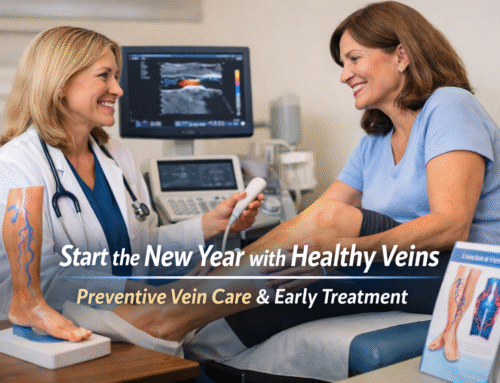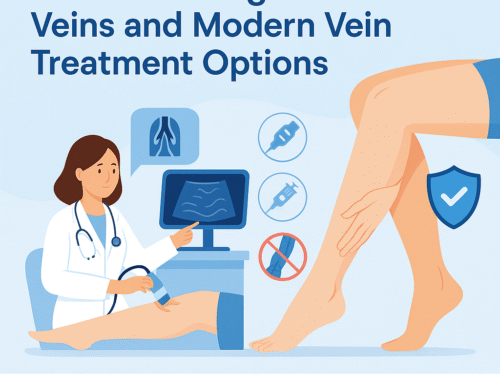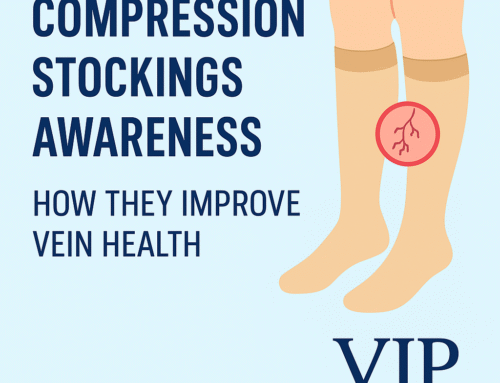The Proven Benefits of Getting Varicose Vein Therapy
Varicose veins are more than a cosmetic concern. Affecting over 40 million Americans, these bulging, discolored veins can cause persistent pain, swelling, and fatigue—interfering with daily life and confidence. Fortunately, varicose vein therapy has come a long way, offering minimally invasive options that provide both fast relief and long-term results.
In this article, we’ll explore the causes and symptoms of varicose veins, what treatment options are available, and why seeking therapy is not only beneficial for your appearance—but crucial for your overall vein health.
What Are Varicose Veins?
Varicose veins are enlarged, twisted veins that typically appear in the legs and feet due to increased pressure. Veins carry blood back to the heart, and they rely on tiny valves to prevent blood from flowing backward. When those valves fail or weaken, blood pools, causing the vein to enlarge and become visible through the skin.
Common symptoms include:
-
Prominent, twisted veins in blue or purple hues
-
Swelling and heaviness in the legs or ankles
-
Throbbing, aching, or burning sensations
-
Skin discoloration or rash near affected areas
-
Itchiness or dry, irritated skin
-
Muscle cramps, especially at night
-
Worsening discomfort after standing or sitting for long periods
While they’re often associated with aging, varicose veins can develop at any age and are influenced by a range of factors.
Why Do Varicose Veins Develop?
There isn’t one single cause of varicose veins. Instead, they are often the result of a combination of genetics, lifestyle, and physical strain on the lower limbs.
Some of the most common causes include:
-
Prolonged standing or sitting: Occupations like nursing, teaching, retail, or office work can limit proper blood flow.
-
Pregnancy: Increased blood volume and hormone changes put additional stress on the veins, especially in the legs.
-
Obesity: Extra body weight can put more pressure on veins, especially in the lower extremities.
-
Hormonal changes: Puberty, pregnancy, menopause, or hormone replacement therapy may contribute to vein wall relaxation.
-
Genetics: A family history of varicose veins significantly increases your risk.
It’s estimated that 25% of adults will experience varicose veins at some point. If left untreated, they can progress to more serious issues like venous ulcers, skin infections, or deep vein thrombosis (DVT).
For more on the science of venous insufficiency and how it affects circulation, visit the Society for Vascular Surgery for in-depth medical insights.
Can Varicose Veins Be Prevented?
While not all varicose veins can be avoided—especially if they run in your family—there are effective ways to reduce your risk or slow progression:
-
Stay active: Daily walking or low-impact activities like swimming and cycling improve circulation.
-
Maintain a healthy weight: Excess weight adds strain to your vascular system.
-
Elevate your legs: Raising your legs above heart level can help blood flow back toward the heart.
-
Wear compression stockings: These improve venous return and reduce swelling.
-
Avoid sitting or standing for long periods: Take regular breaks to move around.
Even small changes in your daily habits can go a long way in preserving vein health.
Professional Varicose Vein Treatment Options
When lifestyle changes aren’t enough, professional treatments offer fast, effective relief. Today’s vein therapy techniques are safe, FDA-approved, and often covered by insurance if symptoms are severe.
Here are the most commonly recommended procedures:
🔹 Endovenous Laser Therapy (EVLT)
This minimally invasive procedure uses laser energy to seal the affected vein. The body then reabsorbs the closed vein naturally, rerouting blood through healthier vessels.
🔹 Sclerotherapy
A saline or chemical solution is injected directly into the varicose vein, causing it to collapse and eventually disappear. This is ideal for small to medium-sized veins and requires no downtime.
🔹 Radiofrequency Ablation (RFA)
Similar to laser therapy, RFA uses radiofrequency energy to close off damaged veins. It’s highly effective for larger varicose veins and is usually performed under local anesthesia.
🔹 Microphlebectomy
For larger surface veins, a small surgical technique can remove veins through tiny incisions. This outpatient procedure leaves little to no scarring.
Each option has its own advantages depending on vein size, severity, and patient health. A vein specialist can evaluate your condition and guide you to the best course of action.
The Life-Changing Benefits of Vein Therapy
Many patients delay treatment thinking their veins are “just cosmetic” or that discomfort is normal with age. But untreated varicose veins can worsen and lead to chronic pain, restless legs, or skin complications.
Here’s what patients typically experience after treatment:
-
✅ Immediate symptom relief: Pain, heaviness, and swelling decrease quickly
-
✅ Improved mobility and quality of life
-
✅ Smoother, clearer skin without visible bulging veins
-
✅ Prevention of complications like ulcers or clots
-
✅ Boosted confidence and comfort in daily activities
In fact, most patients report significant improvement within days or weeks, with long-term results and minimal need for repeat procedures.
Why Choose the Vein Institute of Pinellas?
At the Vein Institute of Pinellas, we specialize in state-of-the-art vein care using minimally invasive methods tailored to each patient’s needs. Our expert medical team is committed to helping you achieve pain-free, beautiful legs with compassionate, personalized care.
Whether you’re just noticing the signs or have suffered for years, we’re here to help you find lasting relief.
📞 Call (727) 240-2297 today or visit us online at veinsvip.com to schedule your consultation.
Take the First Step Toward Healthier Legs Today
Varicose veins may be common—but they don’t have to be permanent. With the right treatment, you can eliminate discomfort, improve circulation, and restore confidence in your appearance.
Don’t wait until symptoms worsen. Explore your options and discover how vein therapy can transform the way you feel and move every day.
➡️ For trusted medical resources on varicose vein treatments, prevention tips, and venous health research, check out Cleveland Clinic’s Varicose Vein Guide.






Leave A Comment